Introduction
The DJI OM 4 is the latest iteration of the company’s hand-held gimbal designed for smartphones. It’ll set you back a reasonable £139 and comes with a bunch of accessories, including a mini grip-tripod and two magnetic attachments.
Yes, this latest version embraces a new magnetic design. Whereas the OM 3 has a phone clamp on its arm, the OM 4 gimbal arm features a powerful magnet that provides a secure bond to the Magnetic Phone Clamp or Magnetic Ring Holder phone attachments. It’s an improved design for sure.
There’s also a new colour, being a light grey compared to the dark grey of the OM 3.
Of course, the OM 4’s champion feature is its 3-axis gimbal, able to smooth out the roughest handheld video action. But there’s more.
The DJI Mimo app offers a bunch of fun shooting modes, including hyperlapse, timelapse and pano, while an updated ‘Active Tracking 3.0’ should provide better subject tracking.
Truly, the OM 4 is a brilliant tool to expand the shooting features of your smartphone and transform video footage.
If video quality is a key concern with your smartphone, you could save a stack by pairing the OM 4 with a budget to mid-tier smartphone rather than forking out for a flagship device.
Ultimately, the DJI OM 4 is for those that want to lift the video features of their smartphone, especially to obtain smooth handheld videos. And to that degree, it is worth every penny.
Ease of Use
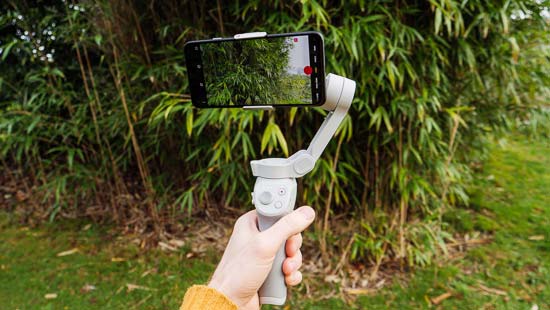 |
You won’t need a huge amount of time to acclimatise to the DJI OM 4.
It now features a magnetic design to attach the smartphone, with two options; the Magnetic Ring Holder stuck to the back of the phone, or the Magnetic Phone Clamp, both of which are supplied.
Should you choose the Magnetic Ring Holder, there’s a see-through guide included to line it up centrally on the phone’s rear to ensure an even balance for the best possible performance.
We quickly opted for the Magnetic Phone Clamp instead, which feels that extra bit secure and doesn’t leave any of the residue markings on the phone like the Ring Holder.
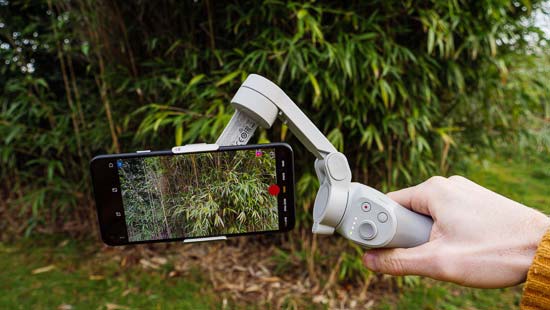 |
This new magnetic design has enabled DJI to reduce the size and weight of the gimbal arm and is the only notable design change when compared with the DJI OM 3.
Overall, we prefer the new magnetic design – it’s slicker and quicker. Crucially, the magnet is like glue. Truly, we gave it a real test for weakness but it has held firm.
With the magnetic attachment properly aligned, you won’t have the same faff counterbalancing as with a ‘proper’ gimbal and camera pairing. Snap in place, turn on and go. Simple. It’s so refreshingly easy and contributes to the fun factor.
Otherwise, the design here is largely familiar. It’s a compact, single-handed gimbal weighing less than 400g, with an arm that folds away when not in use. It’s still too big to slide into a trouser pocket, however the included soft storage pouch provides the added protection needed.
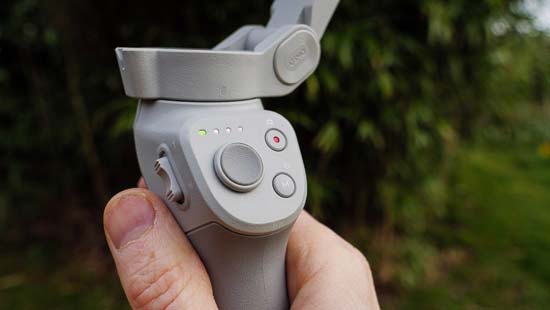 |
We used the OM 4 with the Google Pixel 4a 5G – that’s a 6.2inch screen smartphone – and the pairing felt fine. On the DJI website, the maximum load is 230g ± 60g, which covers most smartphones and is almost getting onto compact camera territory.
With a textured and ergonomic grip, the OM 4 sits in the hand perfectly, while the grip can be extended using the supplied Grip-Tripod when attached to the universal 1/4in tripod mount on the underside.
Overall, build quality is good. It’s plastic and we wouldn’t want to throw the OM 4 around too much or expose it to inclement weather, but it’s solid enough and we haven’t been too concerned about damaging the arm or its strong motors.
Battery life is solid. On a full charge there is a claimed 15 hours operating time, so a long weekend of heavy use on a single charge is entirely possible.
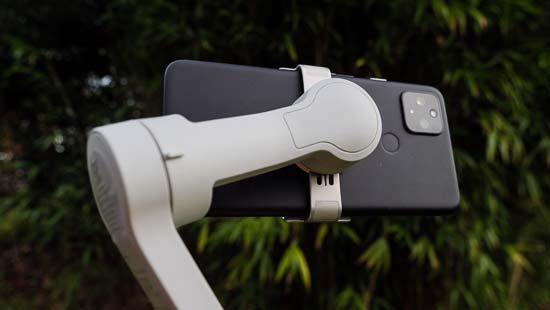 |
There are a few controls at your fingertips; trigger, zoom, joystick, record button and power on/off button.
Memorising button controls is the trickiest initial hurdle in becoming familiar with the OM 4. That power button switches the device on or off with a single long push. Once on, press it once to scroll through the shooting modes, double-tap it to switch the phone orientation between portrait and landscape format, while a triple-tap puts the OM 4 in sleep mode.
With the phone securely attached and a seamless Bluetooth (low energy 5.0) connection between phone and OM 4 established, you’re ready to explore what the DJI Mimo app has to offer.
Yes, you’ll need the DJI Mimo app to operate the OM 4. The free app is available for both Android and iOS devices, though the features available do vary from phone to phone.
 |
We used the OM 4 with a Google Pixel 4a 5G – Google phones do not have quite the same compatibility as Huawei or Apple phones for example.
In our pairing, there are most but not all of the same shooting modes that are available on other phones. Key absent shooting modes included slow motion video and 4k 60fps – that’s a real shame. Also, we found the timelapse mode particularly glitchy.
Do check out the compatibility guide on the DJI website highlighting the functionality differences.
The gimbal itself offers four ‘follow’ modes; follow, tilt locked, FPV (free movement) and the new SpinShot. The latter does the Matrix-style vortex effect.
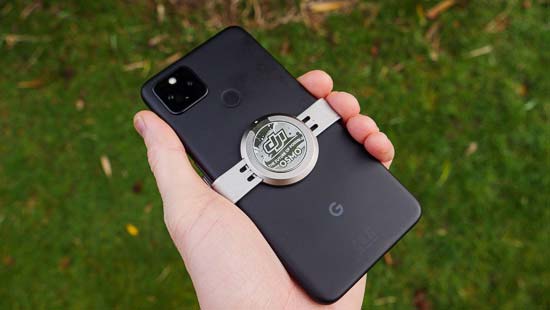 |
Between the four follow modes all scenarios are covered, though we did a lot of filming in the standard follow mode, which uses the highly effective Active Tracking 3.0.
The simplest way to initialise the new tracking mode is to press the OM 4 trigger button and a green box locks onto your central subject to indicate what is being tracked. Alternatively, you can manually press and drag to create a box around your intended subject on the touchscreen.
This new Active Tracking is brilliant. Highly effective, it’ll keep the selected subject in the middle of the frame with unerring accuracy, even if they turn around.
What’s more, if the subject looks away, the framing changes to bring in more space around their gaze – left, right, up, down, all covered. It’s really intelligent.
 |
As for shooting modes, scrolling from left to right on the DIJ Mimo menu, you have hyperlapse, timelapse, dyna-zoom, video, photo, pano and story modes. Slow motion is also present on select phones – Apple phones seem to have the best compatibility.
Once you get into shooting with the OM 4, there’s plenty of fun to be had!
Hyperlapse speeds the action up to 30x real time. You might have first seen hyperlapse videos of famous world city walkthroughs. For our amble through a quaint Surrey village alive with Christmas hustle, we found the 10x speed provided the preferred degree of speed ramp.
In timelapse mode, you’ll need a tripod. Within that mode, it is possible to manually create a ‘path’, with up to four stopping points of lateral movement. For example, you can pan from left to right, move at a diagonal, switch direction and so on.
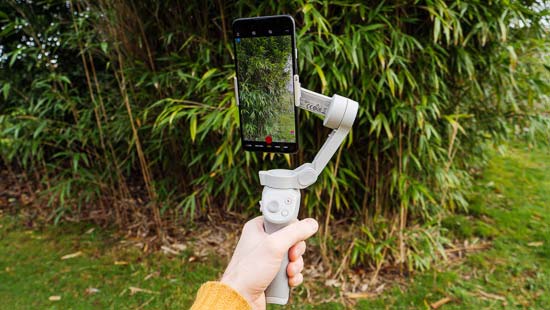 |
We can see this ‘path’ feature being useful for urban scapes to follow architectural lines or go with the flow of moving traffic. Certainly, introducing camera movement during timelapse sequences produces more dynamic results than what can be achieved with a fixed static tripod-mounted capture.
There are three panorama modes to choose from, including a 240° horizontal stitch, a nine frame 3×3 grid stitch, plus a new ‘Clone Me’ pano.
Clone Me pano does a wide horizontal stitch over three frames, with a timer in between each capture to enable the subject to jump into each of the three stitched frames. Triple-trouble! Given the camera can switch to a selfie mode, you can also use this mode easily when solo.
There is another new mode called ‘dyna-zoom’. Choose between move in or move out, select your subject in the same way as active tracking, then start recording.
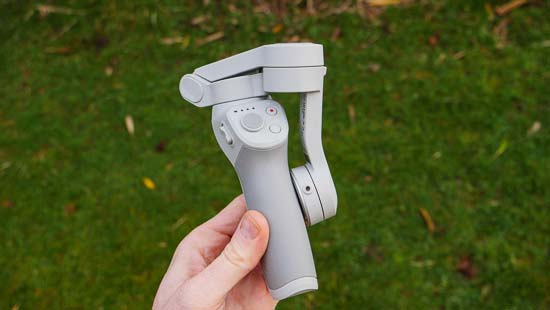 |
As you move in (or out), the subject remains the same size in the frame despite the change in distance, background and bokeh. Think that famous Spielberg camera trickery in the film Jaws.
Our attempts have had mixed results, with many sequences showing an unpleasant jerky motion. It’s perhaps the one shooting mode that might benefit from a firmware update.
Overall, the DJI OM 4 handles like a dream – it’s great for all skill levels, while the shooting modes provide enough play time to outlive the novelty phase.
Image Quality
The DJI OM4 is a gimbal that uses the camera of your connected smartphone. As such, the OM4 doesn’t affect image quality besides the features it offers, mainly the gimbal stabilisation and unique shooting modes.
In our review context, the Google Pixel 4a 5G already offers decent optical and electronic image stabilisation. So did we notice a difference with it attached to the DJI OM 4? In short, yes we did – you can’t beat motorised stabilisation.
We took simultaneous run-and-gun videos with the Google Pixel 5 handheld and Google Pixel 4a 5G mounted to the OM 4. (Those two phones have identical cameras.)
Comparing footage and the difference is clear (see our example). The OM 4 gimbal counters such extreme vibrations and camera angle shifts to produce wonderfully smooth videos.
Active tracking is really handy, too, especially for solo v-logging. It’ll (mostly) keep you sharply focused and in the centre of the frame as you move about. They are the occasional drops, mainly due to extreme subject movement.
Hands down, these two champion features are worth the money alone if you are into handheld action videos. Memorable moments, travels, v-logging, all transformed for the better by this gimbal.
Then there are the shooting modes in the DJI Mimo app. Hyperlapse is addictive, certainly in the early days. Want a quick whistle-stop tour of your local town or travels? Try this fun effect, though it’s one you may tire of quickly.
Most smartphones offer a timelapse mode now, but none provide added camera movement during capture – that’s because their cameras are fixed. The unique Vivo X51 5G smartphone has a gimbal mounted camera, but it’s movement is limited and there’s no ‘motionlapse’ feature.
Introducing a little bit of movement during a timelapse sequence really does lift it over fixed angle offerings. Again, this feature alone could pay for the OM 4.
The pano modes are interesting. ‘Clone me’ will provide some fun, while another mode takes nine photos one after the other in a 3×3 grid and then merges the images into one wide angle scene.
You’ll need to keep the phone as steady as possible during a pano capture. We had several attempts with misaligned detail between those stitched frames. Still, with a steady hand, clean results are possible.
Pano Mode

Off
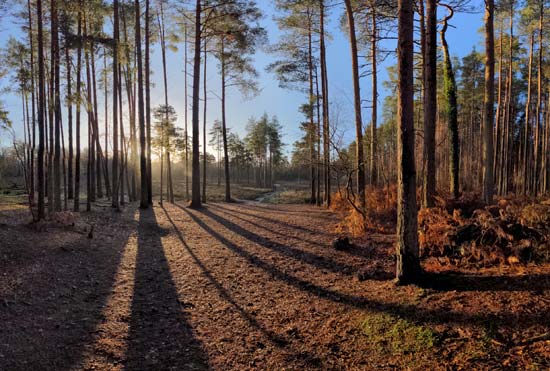
3×3 On

Pano 240

Pano Clone Me

Pano Clone Me
Sample Videos
Product Images




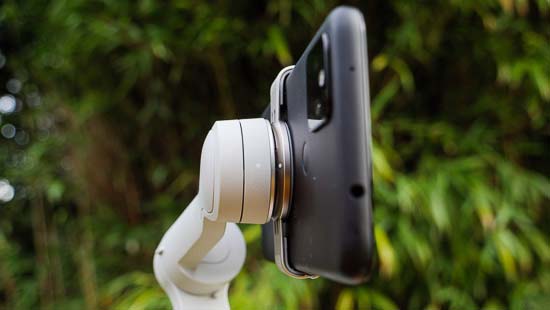
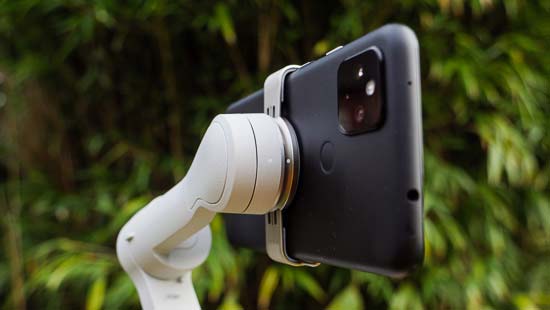
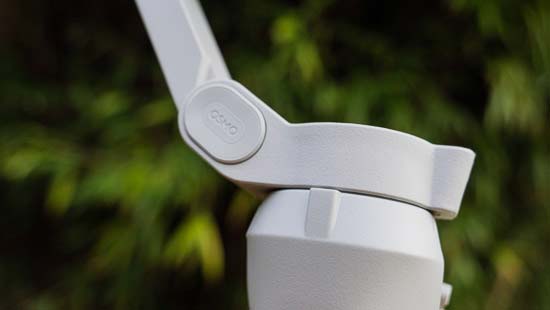
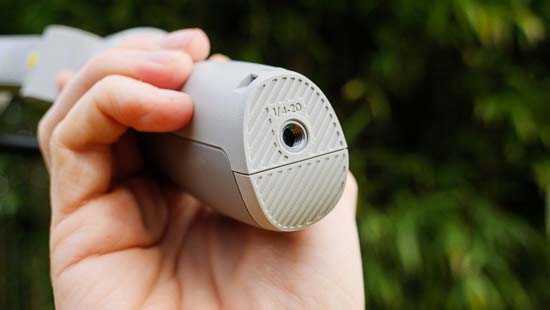
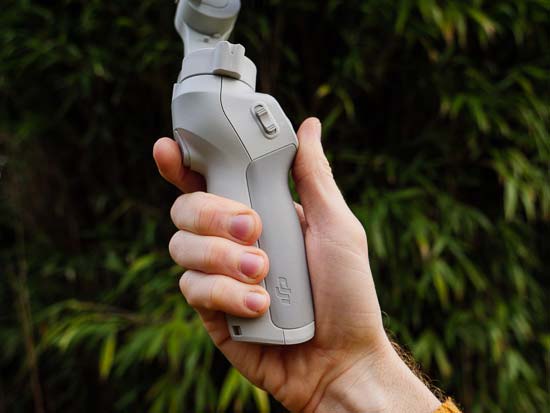



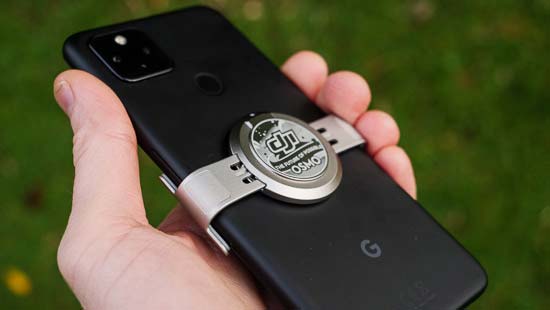

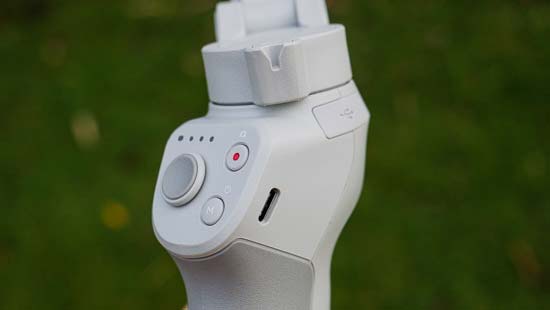
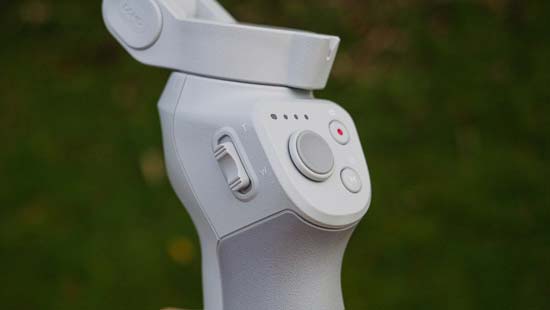

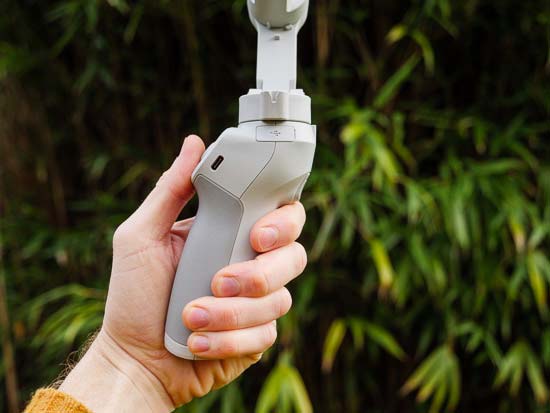

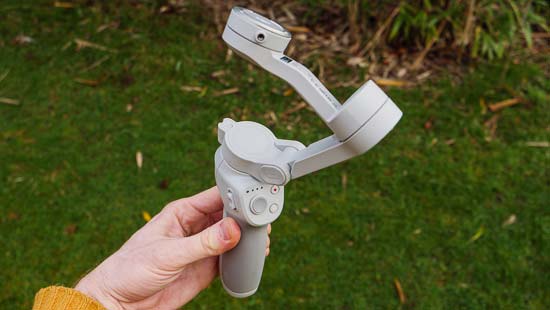
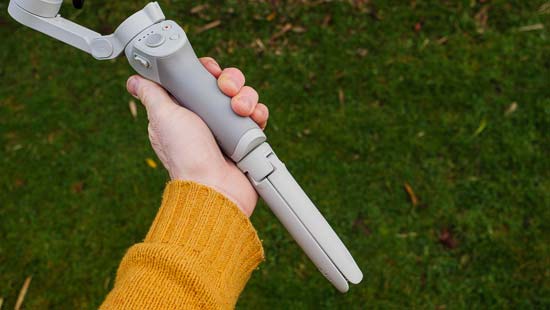
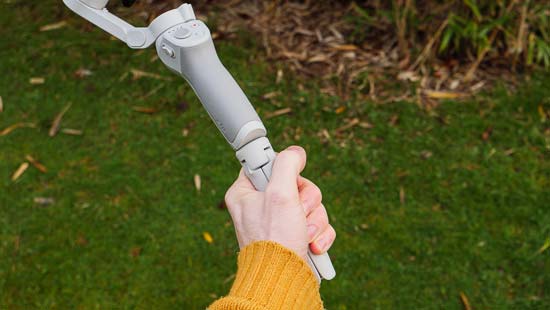
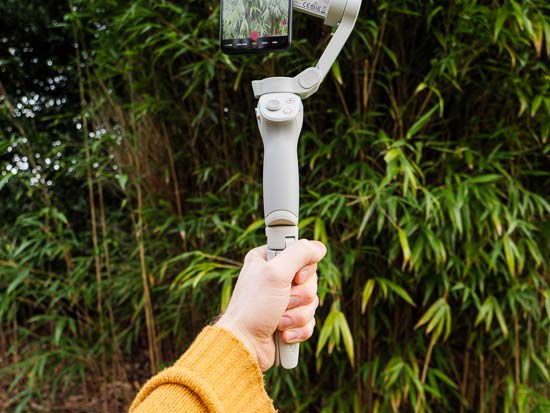

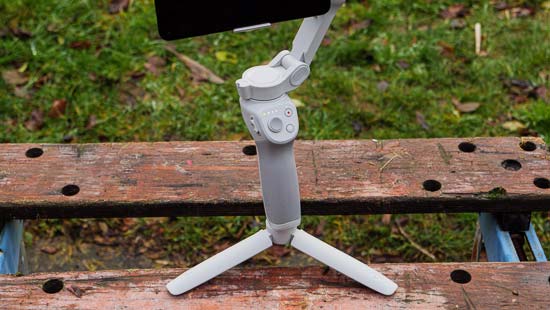
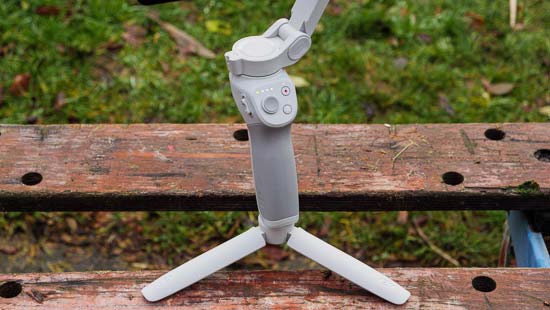

Specifications
General
-
Compatible Phone Weight
-
230 ± 60 g
-
Compatible Phone Thickness
-
6.9-10 mm
-
Compatible Phone Width
-
67-84 mm
Battery
-
Gimbal Charging Port
-
USB-C
-
External Device Charging Port
-
USB-A
-
Universal Mount
-
1/4″ Threaded Hole
Gimbal
-
Max Control Speed
-
120 °/s
Wireless
-
Model
-
Bluetooth Low Energy 5.0
Conclusion
For us, the DJI OM 4 is the go-to smartphone gimbal, for users of any skill level. It’s both easy to use and sophisticated, the design is great, while the DJI Mimo app provides plenty to sink your teeth into.
Design-wise, DJI has largely stuck to the tried and tested format. The big change from the OM 3 is the new magnetic method of attaching the smartphone.
Provided you don’t mind leaving the Magnetic Phone Clamp attached to your phone, the connection between devices is instant and completely secure.
Most importantly, with strength and finesse, the gimbal works a treat for smooth run-and-gun videos. The operating modes cover all scenarios, further complemented by the highly intelligent and effective Active Tracking.
Limited functionality has been a particularly sour note for us, speaking from a limited compatibility experience using a Google Pixel phone. It seems iPhone users will enjoy the most comprehensive functionality.
For us, slow motion was completely absent, timelapses glitchy, while the new dyna-zoom mode could be improved. We urge you to check compatibility first.
Still, those shooting modes are a bonus. Whatever brand phone, we completely recommend the DJI OM 4 for its stabilisation and active tracking alone. It will transform the quality of your handheld smartphone videos and is worth every penny.
| Ratings (out of 5) | |
|---|---|
| Design | 4.5 |
| Features | 4 |
| Ease-of-use | 4.5 |
| Value for money | 5 |









